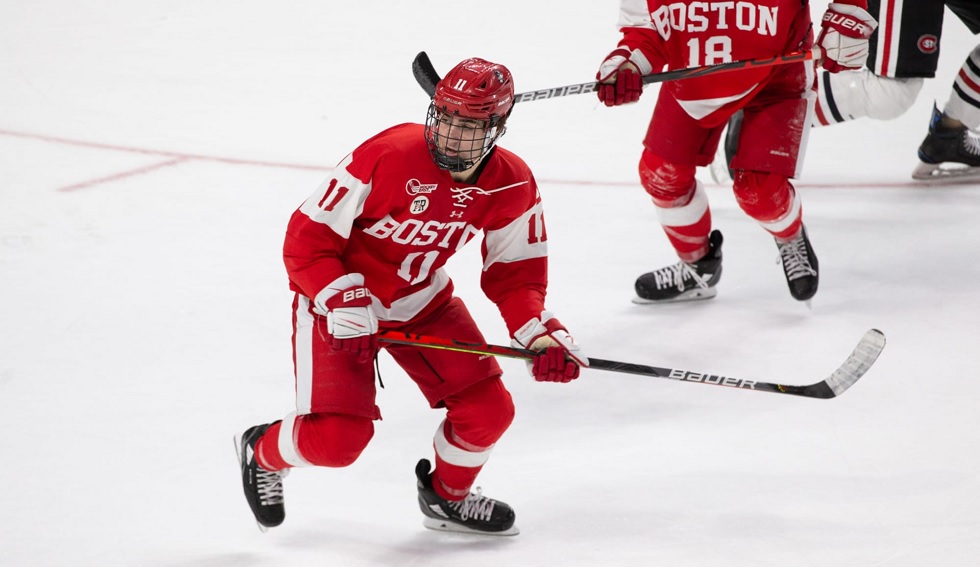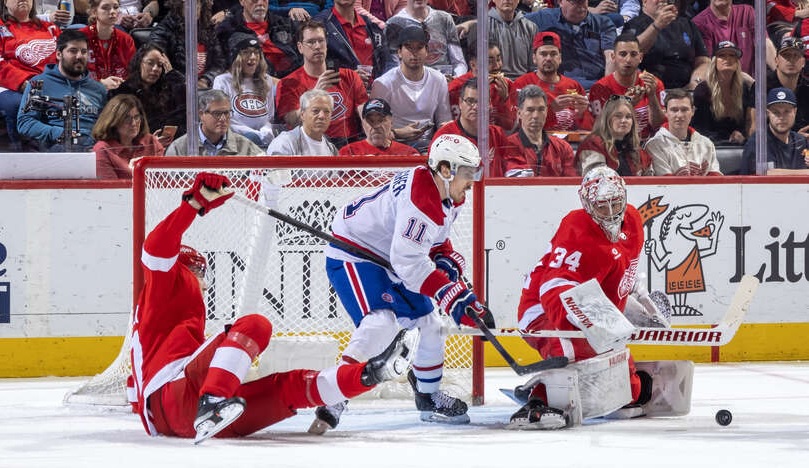HabsWorld.net --
The Olympic Hockey Tournament certainly lived up to its hype, concluding with a thrilling final that saw Canada capture the gold medal on a Sidney Crosby overtime marker. While no Canadiens player managed to capture a medal, it should be noted that Pierre Gervais, the Habs equipment manager, was part of the Canadian contingent. In any event, it is a good time to take one final look at how the Canadiens’ players fared in these Olympiads.
No Miracles for Halak
Halak’s performances against Norway and Sweden, in which he allowed 3 goals each time, were not as impressive as his previous outings, but he and his squad still managed to pull out key wins.
Then, a couple of days later, Halak and his compatriots almost pulled off an improbable upset versus team Canada, narrowly losing 3-2. The Slovak netminder made 25 saves in the game and the shots that did beat him were largely last second deflections. In short, he was good, but he did not steal the game. And, in essence, the same could be said about his performance in the Bronze Medal Game where he allowed 4 goals on 32 shots en route to a 5-3 defeat. He ends the tournament with a respectable .910 save percentage and a 2.41 goals against average.
Plekanec’s product drops
While Plekanec was hot in the preliminary round, notching 3 points, he was unable to generate any offence in the elimination phase. However, he certainly tried, taking 9 shots in his final two contests.
Kostitsyn can’t deliver in qualifying round
Sergei Kostitsyn played one final game before seeing his Olympic dream end, losing to Switzerland in a shootout. Unfortunately for the young Belarusian, he was unable to generate anything offensively in that game. Although he certainly made some great passes and obtained a few quality chances, at times he tried to be a little too cute and was not a physical presence. And, when the pressure to score fell on his shoulders in the shootout, he completely missed his shot, allowing Jonas Hiller and the Swiss to move on to the quarterfinals. Having said that, his 5 points in 4 games are certainly decent, but as Canadiens fans, most of us suspect he is capable of much more.
Markov and Korneev suffer a humiliating loss
Andrei Markov’s tournament ended on a sour note, as team Russia got pummelled by Canada to the tune of 7-3. In that game, the Habs blueliner played just over 15 minutes and finished the contest with a horrendous -3 rating. Markov ended the tournament with 2 assists and a -1 rating. As for Konstantin Korneev, he played under 9 minutes in that contest and somehow managed to maintain an even rating despite the egregious score.
Regardless of Markov’s less than flattering statistics, one simply has to wonder what was going through coach Vyacheslav Bykov’s head. Considering the importance of the game and the early hole the Russian’s found themselves in, how can top players like Markov, Gonchar, Malkin, Datsyuk and Ovechkin play near or under 20 minutes while second-tier players like Morozov, Nikulin and Zaripov see a regular shift? This is not pee-wee hockey, he does not have to make everybody and their parents happy.
Weber is back
After sitting out the entire game against Norway, Yannick Weber eventually returned to his coaches’ good graces, hitting the ice in Switzerland’s final two games against Belarus and the U.S. His performance was not particularly remarkable as he maintained the exact same statistics that he had after the first three games: no points, 1 shot, 6 penalty minutes and a -2 rating. Having said that, he was generally solid in his own end, although he does have some difficulties defending in one-on-one situations. In his final two games, he played an average of 11 minutes and was even used at critical points in both games, seeing ice during the final two minutes and in overtime.
Final Thought
Watching the Olympic Hockey tournament for the past two weeks, there can be no doubt of the increasing quality of international hockey. Teams such as Switzerland, Norway and Latvia proved to be more difficult to handle than many expected. In fact, these three squads almost caused major upsets in the elimination round. Meanwhile, the last 14 days have also served to shine some light on some players from these smaller hockey nations.
Norwegian blueliner Jonas Holos thoroughly impressed me, playing nearly 30 minutes per game against some of the world’s best players. The
Farjestad player was drafted by the Avalanche in the 6th round in 2008 and might just be the steal of the draft. Another Norwegian, Mats Zucarello Aasen, also caught my attention. The 5’7 forward was a nuisance for opposing defenders and showed good prowess around the net, collecting 1 goal and 2 assists in 4 games. Roman Wick of Switzerland managed to obtain 5 points while also being a considerable physical presence.
And, frankly, a few more players could easily be added to this list. Considering the continued improvement of many of these countries, teams like the
Habs would be wise to turn their attention towards their players. While one might not always find the proverbial diamond in the rough, managing to find new avenues to fill your team can give you a significant edge. Just look at the San Jose Sharks, who for years have tapped into players from Germany. Those players have managed to give extra depth to the team by either filling roster spots or being parlayed into other assets. Remember, for example, that Marco Sturm was a key component in the Joe Thornton deal. Bottom line, in today’s salary capped world, every little advantage matters.

